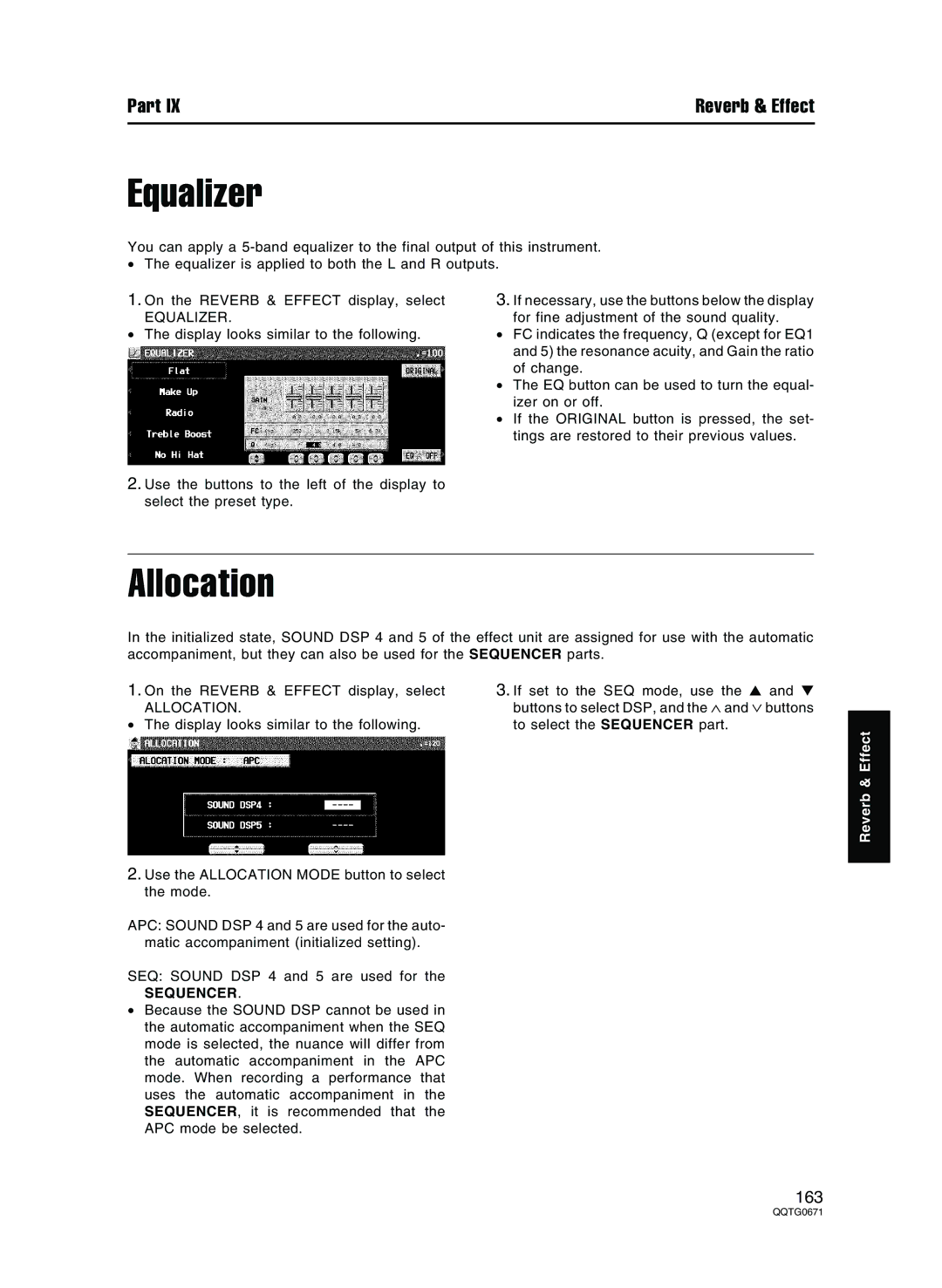
Part IX | Reverb & Effect |
Equalizer
You can apply a
•The equalizer is applied to both the L and R outputs.
1.On the REVERB & EFFECT display, select
EQUALIZER.
•The display looks similar to the following.
2.Use the buttons to the left of the display to select the preset type.
3.If necessary, use the buttons below the display for fine adjustment of the sound quality.
•FC indicates the frequency, Q (except for EQ1 and 5) the resonance acuity, and Gain the ratio of change.
•The EQ button can be used to turn the equal- izer on or off.
•If the ORIGINAL button is pressed, the set- tings are restored to their previous values.
Allocation
In the initialized state, SOUND DSP 4 and 5 of the effect unit are assigned for use with the automatic accompaniment, but they can also be used for the SEQUENCER parts.
1.On the REVERB & EFFECT display, select
ALLOCATION.
•The display looks similar to the following.
2.Use the ALLOCATION MODE button to select the mode.
APC: SOUND DSP 4 and 5 are used for the auto- matic accompaniment (initialized setting).
SEQ: SOUND DSP 4 and 5 are used for the
SEQUENCER.
•Because the SOUND DSP cannot be used in the automatic accompaniment when the SEQ mode is selected, the nuance will differ from the automatic accompaniment in the APC mode. When recording a performance that uses the automatic accompaniment in the SEQUENCER, it is recommended that the APC mode be selected.
3.If set to the SEQ mode, use the ▲ and ▼ buttons to select DSP, and the ∧ and ∨ buttons to select the SEQUENCER part.
Reverb & Effect
163
